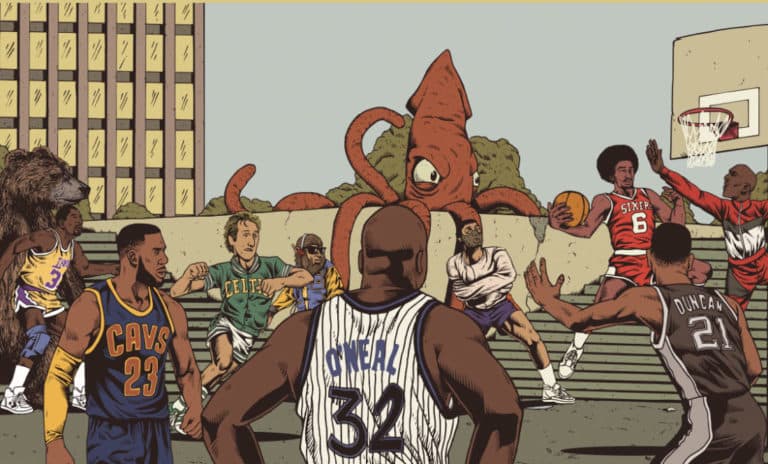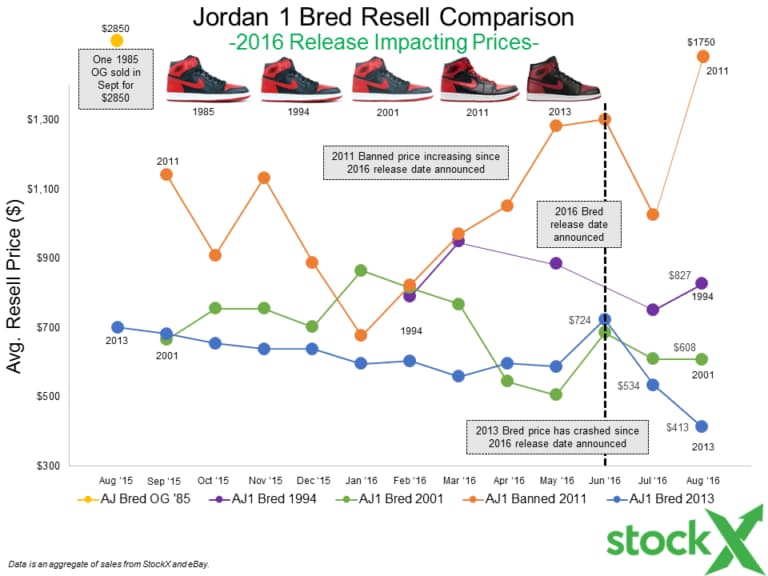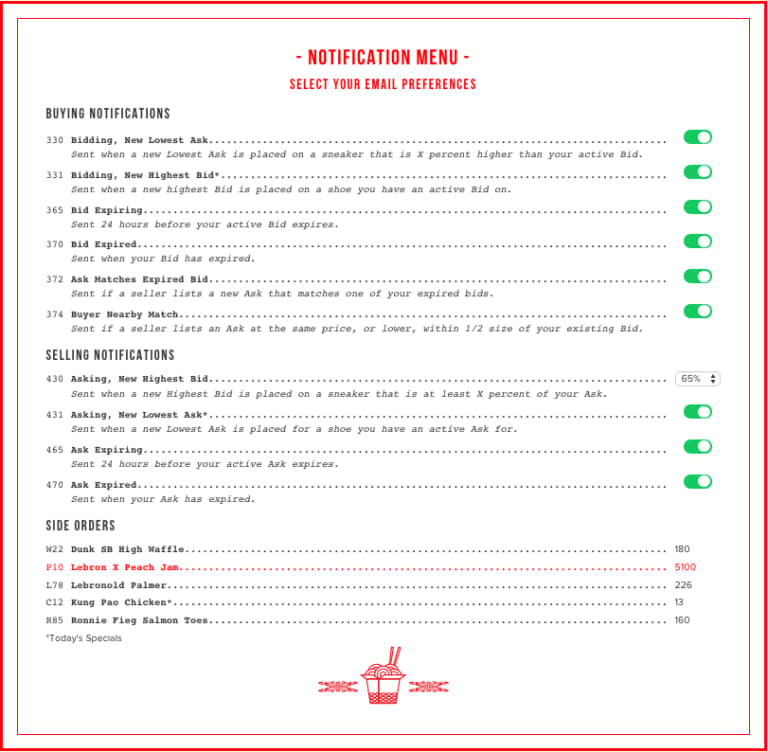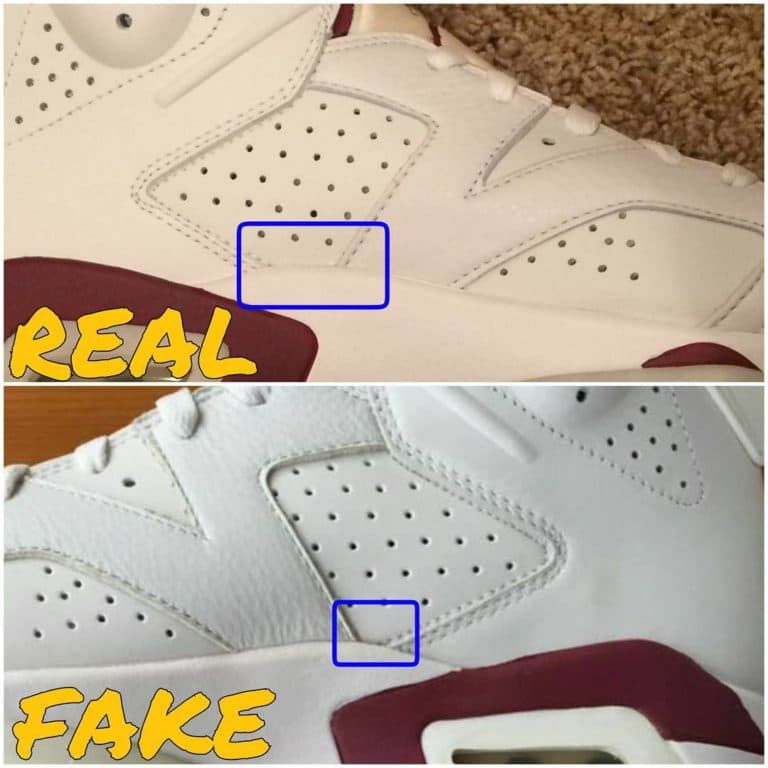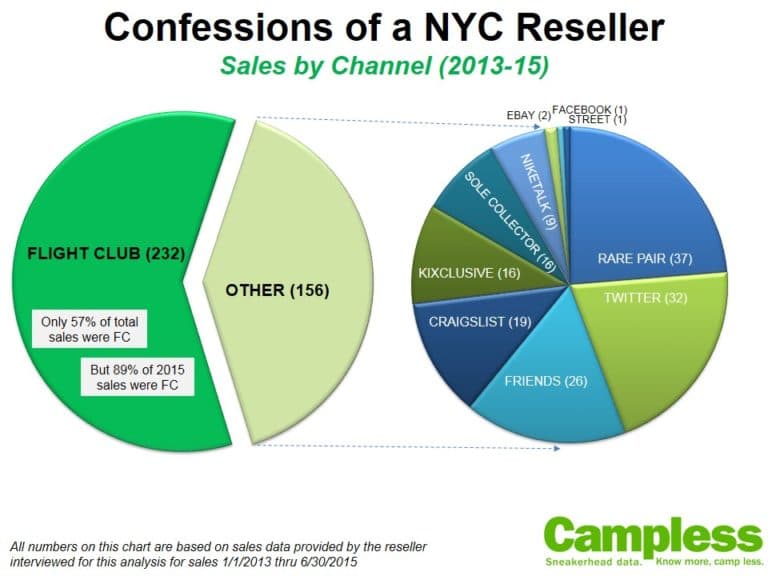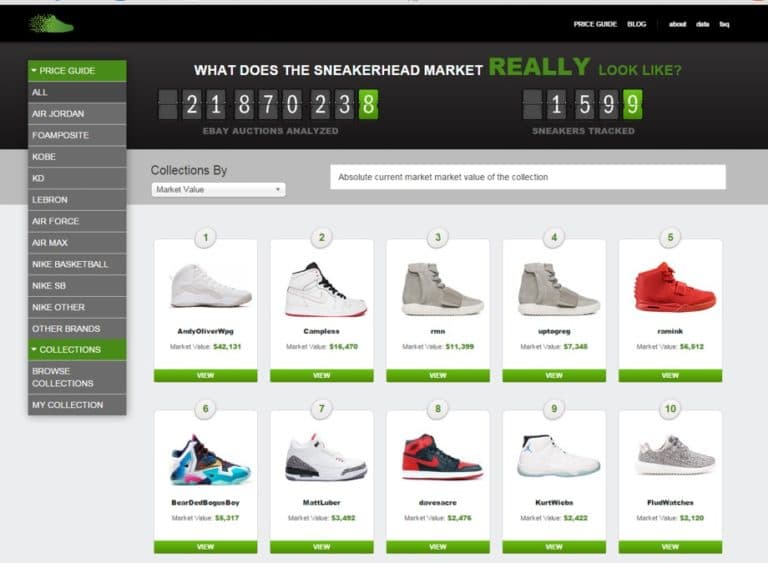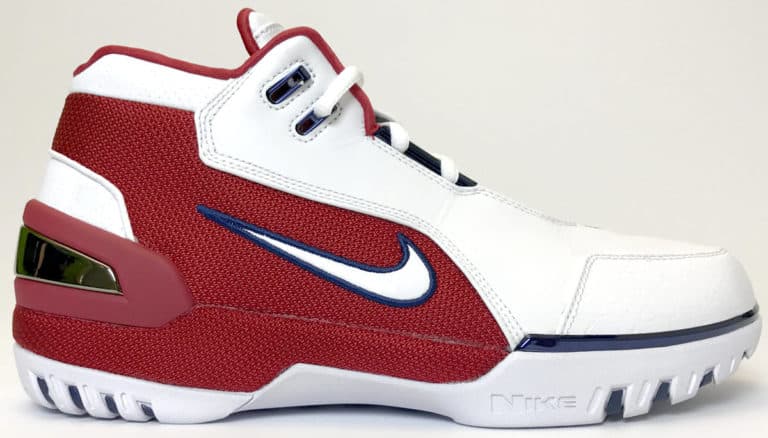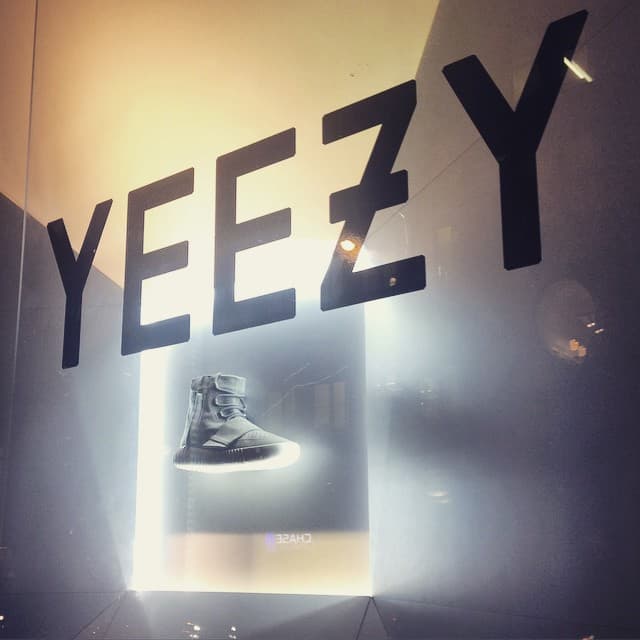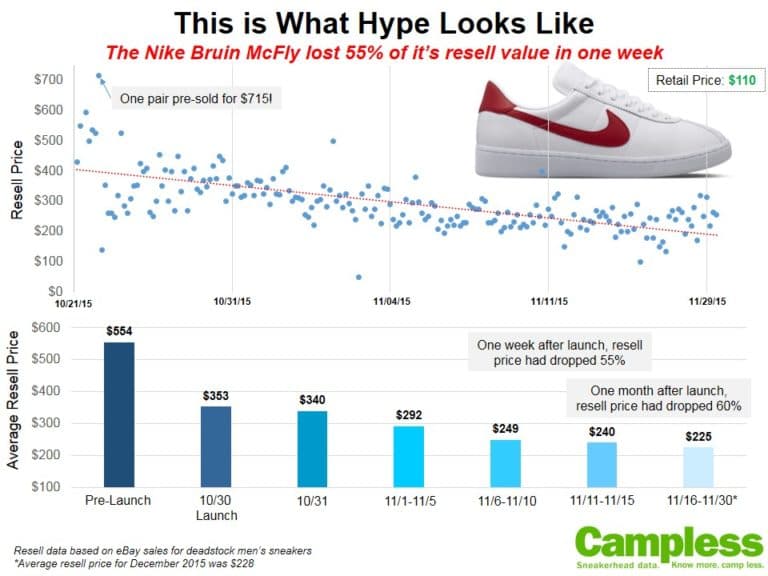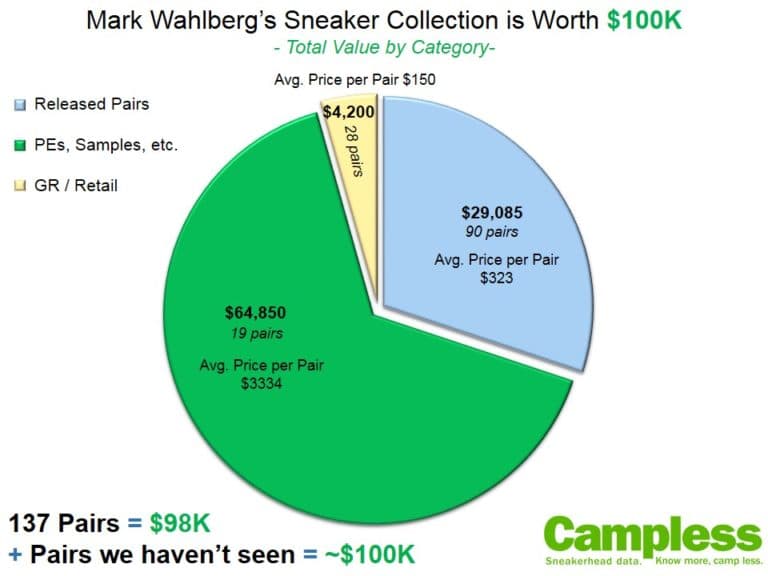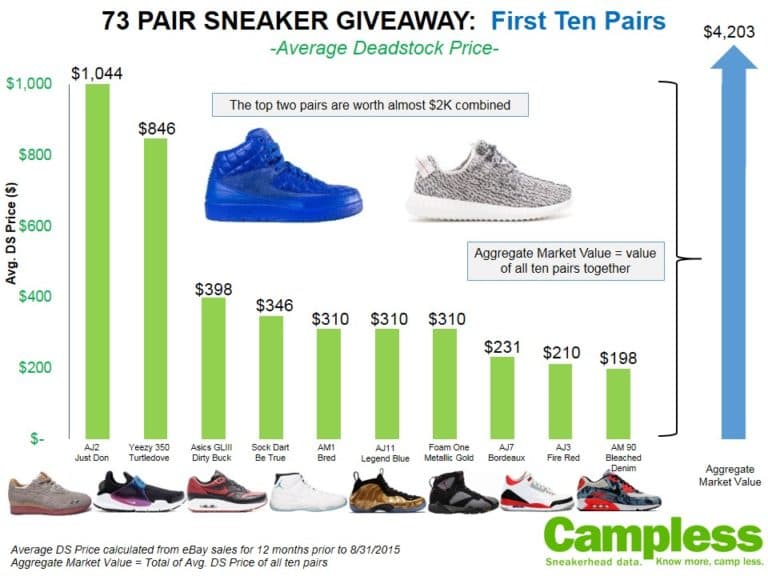Previously, in “Do eBay resellers with more feedback command higher prices?“, we answered “yes” and shared this graph:
Now we will explain.
We conducted this analysis by looking at three sneakers – three recent Jordan Retro releases which had very high eBay sales volume and very low price volatility. They were:
Air Jordan Retro 11 Bred (2012). Avg Price $303. Price Volatility 20%. DS Mens Pairs Sold on eBay 18,569.

Air Jordan Retro 4 Bred (2012). Avg Price $228. Price Volatility 16%. DS Mens Pairs Sold on eBay 6,915.
Air Jordan Retro 5 Grape (2013). Avg Price $229. Price Volatility 18%. DS Mens Pairs Sold on eBay 7,431.
We looked at all eBay sales from the sneakers’ release through September of 2013; only deadstock, mens’ pairs.
The goal was to determine if eBay resellers who have more feedback can command higher prices for a sneaker as compared to a reseller with less feedback, selling the same sneaker. We chose sneakers which, relative to the rest of the sneakerhead marketplace, are basically commodities – high volume, stable prices – as a way to isolate the difference in pricing to be a factor of seller feedback as much as possible, given the data available to us.
For eBay seller feedback we created 8 categories, each with a range of feedback based on numbers which might have intrinsic value to a buyer (i.e., 0, 5, 50, 100, etc.), while trying to maintain a relatively equal number of sales in each bucket. Those categories are:
- 0-4
- 5-14
- 15-49
- 50-99
- 100-499
- 500-999
- 1,000-9,999
- 10,000+
Note, we are not using the eBay seller rating – the score which indicates the percentage of positive feedback – because we don’t have access to that data.
The results of our analysis are clear: sellers with more feedback have higher prices.
| Jordan 11 Bred | Jordan 4 Bred | Jordan 5 Grape | |
| 0-4 | 281 | 211 | 216 |
| 5-14 | 297 | 221 | 221 |
| 15-49 | 304 | 224 | 227 |
| 50-99 | 308 | 230 | 232 |
| 100-499 | 309 | 234 | 236 |
| 500-999 | 312 | 239 | 233 |
| 1000-9999 | 310 | 235 | 240 |
| 10000+ | 328 | 266 | 260 |
For all three sneakers we can clearly see that the average price increases as we move down the chart. The price differential between those sellers with the fewest feedback (0-4 category) and those with the most (10,000+) is significant. On average, prices are 21% higher for the 10,000+ sellers:
- Jordan 11 Bred: $47 = 17% higher prices for 10,000+ category sellers vs. 0-4 category sellers
- Jordan 4 Bred: $55 = 26% higher
- Jordan 5 Grape: $44 = 21% higher
A closer look at the data shows that the big jumps are to and from the end categories. The jump from the first category (0-4 feedback) to the second (5-14) is significant. On average it represents 22% of the total price range differential. The jump from the second to last category (1,000-9,999) to the last (10,000+) is even more significant, representing 46%, on average, of the total price range differential. By comparison, each of the other jumps represents, on average, only 6% of the total price range differential.
Key Insight: Higher feedback equals higher prices BUT it’s only significant if you have less than 5 feedback, or more than 10,000. Anything between 5 and 10,000 has a nominal impact on price. On average, prices for the 5-14 category sellers are only 6% less than those from the 1,000-9,999 sellers. Compare that to the 21% difference between 0-4 and 10,000+ sellers and we have further evidence for only worrying about the ends.
Our advice to sellers is to quickly get 5 sales under your belt, and then don’t worry about it. By the time you reach 10,000 sales you’ll know more about eBay selling than we could ever uncover with our analysis. In the interim, we’ll try to illuminate some more helpful hints through our sneakerhead data.






